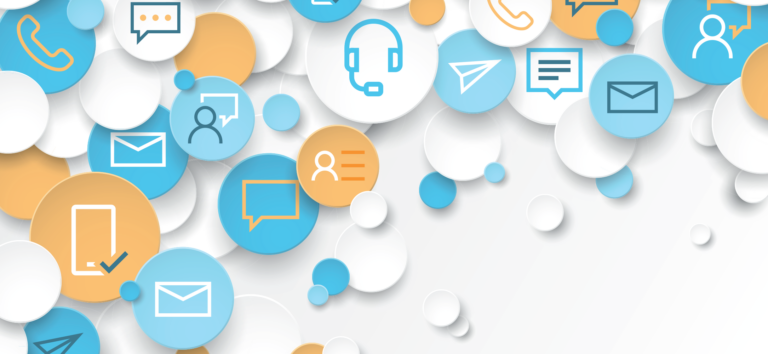How can you improve CX with a customer data platform (CDP)?
- Understand your customers by aggregating disparate data across channels
- Integrate data to create a single, unified, customer profile
- Activate data for omnichannel marketing campaigns
- Manage customer data for privacy compliance
Customer data platforms (CDPs) are becoming mission-critical software for companies that want to thrive in a digital-first, customer-centric world.
Being able to understand your customers’ wants and needs across all the places they interact with your organization is the critical first step in being able to be fundamentally data driven and customer centric.
Companies need a data management solution that can bring together customer data from disparate silos and store it centrally to orchestrate the customer experience (CX). While there are multiple data management solutions on the market like data management platforms (DMPs) and customer relationship management (CRM) platforms, those solutions are more focused on applications for advertising and sales support. Neither DMPs or CRMs are broad enough in application to integrate all forms of customer data like a CDP can.
CDPs offer several benefits for organizations that need to make sense of their customer data. They provide the capability to securely collect and centralize data from across sources and systems to create single, unified customer profile that can be used across the business for omnichannel marketing campaigns in a way that’s compliant with evolving global privacy regulations.
So, where do you start? Here’s how you can use a CDP to optimize your CX efforts and make the most out of your customer data.
1. Understand Your Customers by Aggregating Disparate Data Across the Business
A CDP collects data by connecting to a variety of systems and data sources using built-in connectors, software development kits (SDKs), webhooks, and APIs. CDPs can ingest all types of structured and unstructured data including:
- Profile data
- Real-time interaction data
- Behavioral data
- Demographic data
- Transactional data
- Campaign data
- Product data
- Customer support data
- Mobile data
- Point-of-sale (POS) data
- Marketing data
- Device data
- Internet of things (IoT) data
Being able to deal with different data formats is another benefit of some enterprise-grade CDPs. A CDP that uses schemaless ingestion can ingest raw, event-level data without needing to create predefined tables. The ability to combine data in different formats is a critical step in getting data prepared to activate the customer experience through other MarTech platforms. Not all CDPs offer schemaless raw data integration, so it is definitely a capability to look for.
A CDP can collect customer data in batches for a defined period of time and then load it into the system in a single batch. Batch processing can be automated through workflows as a part of a data pipeline. Another feature some CDPs have is the ability to set up incremental batch processing to only bring in the last data set, since the previous load. Data can also be streamed into a CDP as it’s recorded in web logs and mobile apps. This provides marketers real-time access to changes in unified customer profiles.
2. Integrate Data to Create A Single, Unified Customer Profile
The holy grail of data-driven marketers is the unified customer profile. The unified profile serves as the single source of truth regarding a customer, allowing all groups across the organization to align against the same customer profile. The unified profile is also known as a single customer view (SCV), a unified customer view (UCV), or a golden profile.
A CDP unifies customer data into a single profile through a process called identity resolution. A customer data platform gives marketers the ability to validate, clean, and dedupe customer data during the unification process.
Customer identity resolution works by stitching customer identifiers (email, address, etc.) together from multiple systems, automating identity graph creation and continuously unifying data into profiles as customers continue to engage in real time. Identity resolution is accomplished in a few different ways.
First, when using first-party data, unique identifiers for customer records are matched using common data points like email or name. The second approach, which works better with limited first-party data, analyzes customer data points to estimate the likelihood that two identifiers are the same customer. Profiles are then enriched with second-and third-party data sources that fill in any missing attributes and update other attributes with more recent data.
With this clean and unified data, marketers can personalize the digital experience, send more targeted emails, deliver more relevant recommendations, and implement retargeting.
3. Activate Data for Omnichannel Marketing Campaigns
One of the most desired benefits of a CDP is the ability to make customer data available to other technology systems for marketing activation, campaign execution, and improved messaging for an enhanced customer experience.
A CDP can provide an organization the ability to optimize a variety of business processes, helping to accelerate your digital transformation and establish agile, data-driven processes. A CDP can assist in optimizing audience management, campaign management, customer service and support, product development, and even prospecting and sales.
4. Manage Customer Data for Privacy Compliance
Unlike DMPs and CRMs, some enterprise-grade CDPs come equipped with data privacy and governance capabilities for secure customer data management, making them the perfect platform to stay in compliance with current and future data privacy regulations. Some CDPs can also integrate with consent management solutions, which allow customer data privacy preferences to be integrated directly into a unified customer profile.
With these capabilities, brands can get more visibility and control over how data is being handled, transported, stored and accessed by different teams across the enterprise.
As evolving privacy regulations create more regional requirements, using a CDP to properly segment and control permission for data use throughout the customer lifecycle is critical. CDPs are one of the few centralized data platforms designed to manage data centrally for global compliance.
Improving CX with a Customer Data Platform
CDPs offer organizations the ability to execute truly data-driven, customer-centric marketing and business strategies in four critical ways.
With a CDP, marketers can understand their customers persistently over time. By centralizing data in one platform, a CDP can build single, unified profiles that will serve as the single source of truth for customer data across the organization. It can also enrich those profiles with additional data sources, while providing the capability to analyze and segment audiences.
A CDP can then make that data available to the rest of your technology stack for activation, the execution of marketing campaigns, and messaging that improves the digital customer experience.
CDPs are designed to be leveraged by modern data-driven marketing organizations, and give you the business intelligence needed to tailor messaging and experiences to provide value for your customers.
Our comprehensive CDP RFP guide explores the key steps needed to select the right CDP and build a CDP roadmap for success – from the capabilities to consider, to the questions you should ask prospective vendors to make sure you’re making the right decision. Get your copy of our guide here.




